Introduction
In the dynamic landscape of software development, mastering concurrency is essential for creating responsive and efficient applications. Go, with its innovative approach to handling multiple tasks simultaneously through lightweight goroutines and channels, stands out as a powerful tool for developers. Understanding the intricacies of Go's concurrency model not only enhances performance but also lays the groundwork for building robust applications.
As developers navigate the challenges of concurrent programming, they can leverage best practices, advanced tools, and effective debugging strategies to optimize their code. This article delves into the core concepts of concurrency in Go, equipping developers with the knowledge to harness its full potential and drive productivity in their projects.
Understanding Concurrency in Go: A Foundation for Development
Concurrency in Go enables multiple processes to execute at the same time, utilizing Go's lightweight threads and efficient scheduling to maximize performance. Grasping concurrency is essential for individuals aiming to create responsive applications that can manage multiple tasks without blocking.
In Go, concurrency is achieved through:
- Lightweight functions that can run independently
- Channels, which facilitate communication between these functions
This model allows programmers to create concurrent applications that are efficient and easy to manage, establishing the foundation for everything that follows in this article.
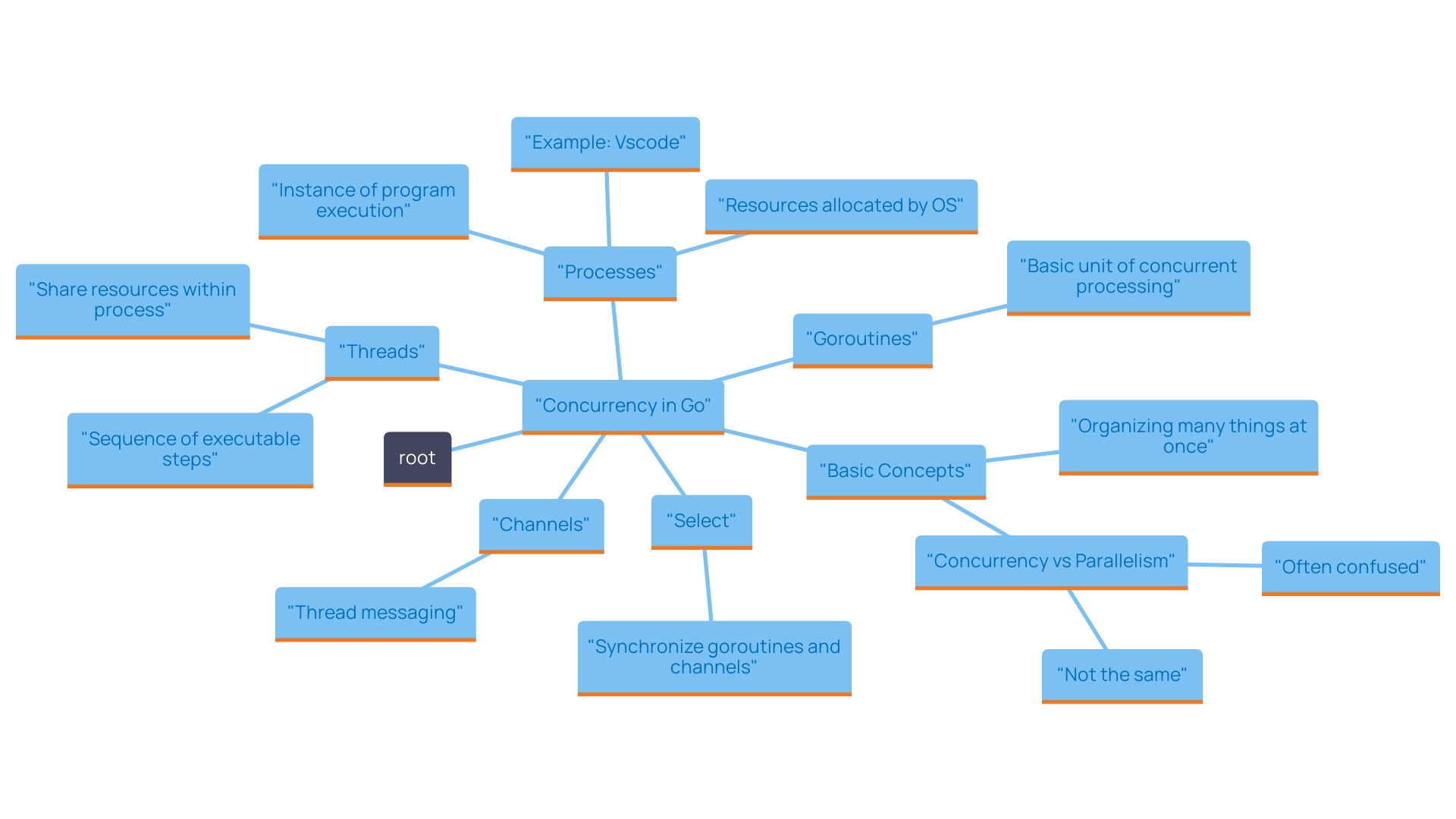
Goroutines and Channels: The Building Blocks of Concurrent Go Applications
Goroutines are the core of Go's concurrency model; they are lightweight threads managed by the Go runtime. Developers can easily create a goroutine by prefixing a function call with the go keyword.
Channels, conversely, are utilized to communicate between concurrent processes, enabling them to synchronize and share data safely. By creating a conduit with the make function, programmers can transmit and receive values, ensuring that the execution flow remains structured.
This blend of lightweight threads and communication pathways enables programmers to create concurrent applications that are responsive and efficient, facilitating smooth multitasking within Go programs.
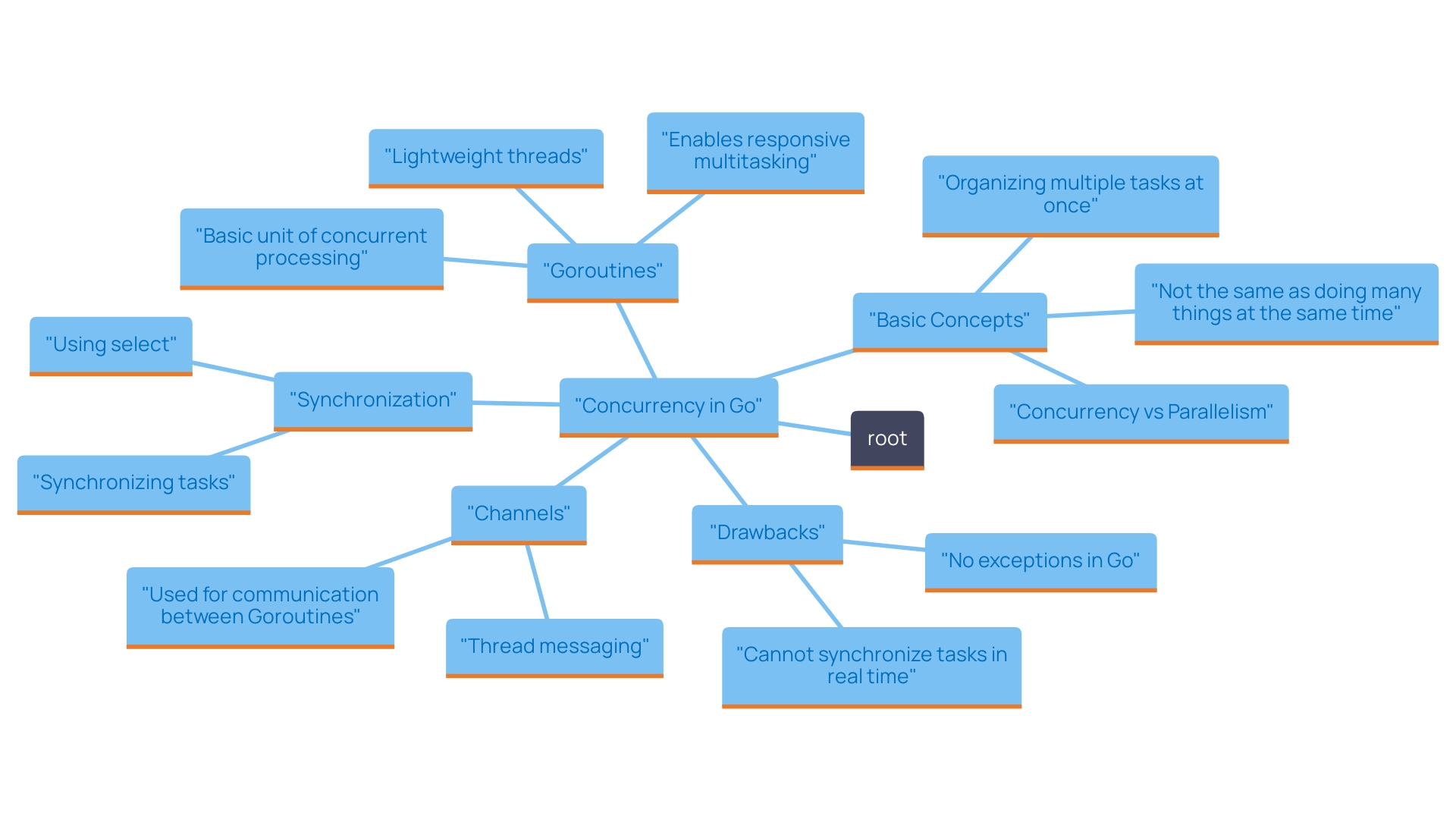
Best Practices for Effective Concurrency Management in Go
To handle concurrency efficiently in Go, developers should adhere to several best practices:
- Always utilize communication pathways for interaction between concurrent tasks to prevent race conditions.
- Implement synchronization mechanisms, such as the
sync.Mutexorsync.WaitGroup, to control access to shared resources. - Avoid blocking operations in goroutines; instead, use non-blocking channels or select statements to handle multiple channel operations.
- Conduct thorough testing of concurrent pathways to identify and address potential deadlocks or race conditions early in the development process.
By incorporating these best practices, programmers can produce software that is not only efficient but also more reliable and easier to maintain.
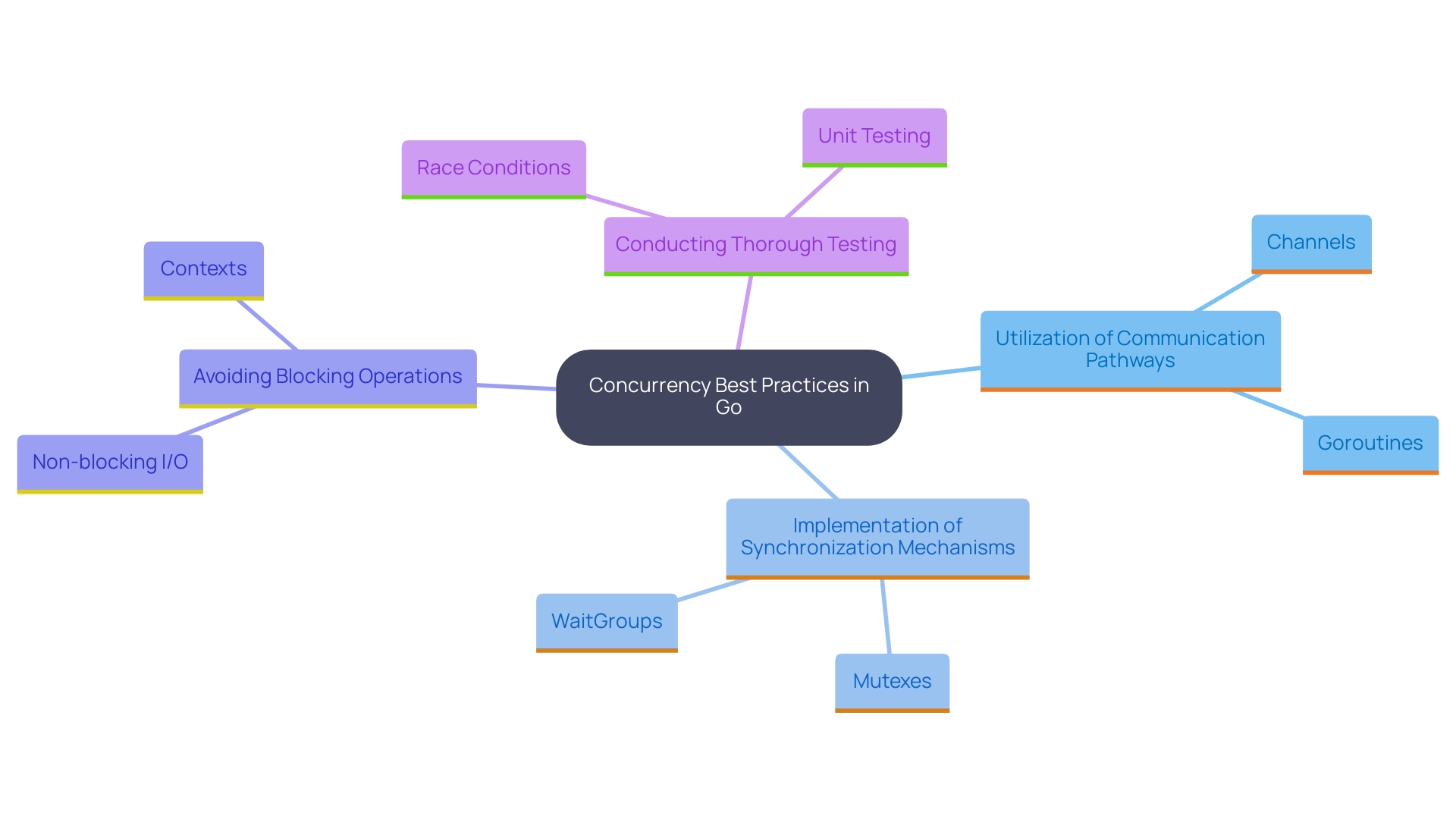
Advanced Tools and Techniques for Optimizing Go Concurrency
For programmers aiming to optimize concurrency in Go, several advanced tools can be leveraged alongside automated code debugging solutions. The sync package offers powerful synchronization primitives such as Mutex, Cond, and Once, which help manage shared state and ensure safe access. For instance, utilizing Mutex enables programmers to avert race conditions when several threads try to access shared data at the same time.
Profiling tools such as pprof offer insights into performance bottlenecks, allowing programmers to identify slow goroutines and optimize their execution paths efficiently. For example, analyzing a pprof report can reveal which functions consume the most CPU time, guiding programmers to concentrate their optimization efforts effectively.
Additionally, automated debugging tools can instantly identify and fix codebase issues, such as memory leaks or inefficient algorithms, ensuring adherence to the latest security best practices and coding standards. The Go race detector is a valuable tool for identifying data races during development; when combined with these automated solutions, it helps ensure that code is not only efficient but also secure.
By utilizing these tools, developers can significantly enhance performance, security, and overall compliance in their concurrent applications, leading to faster and more responsive software.
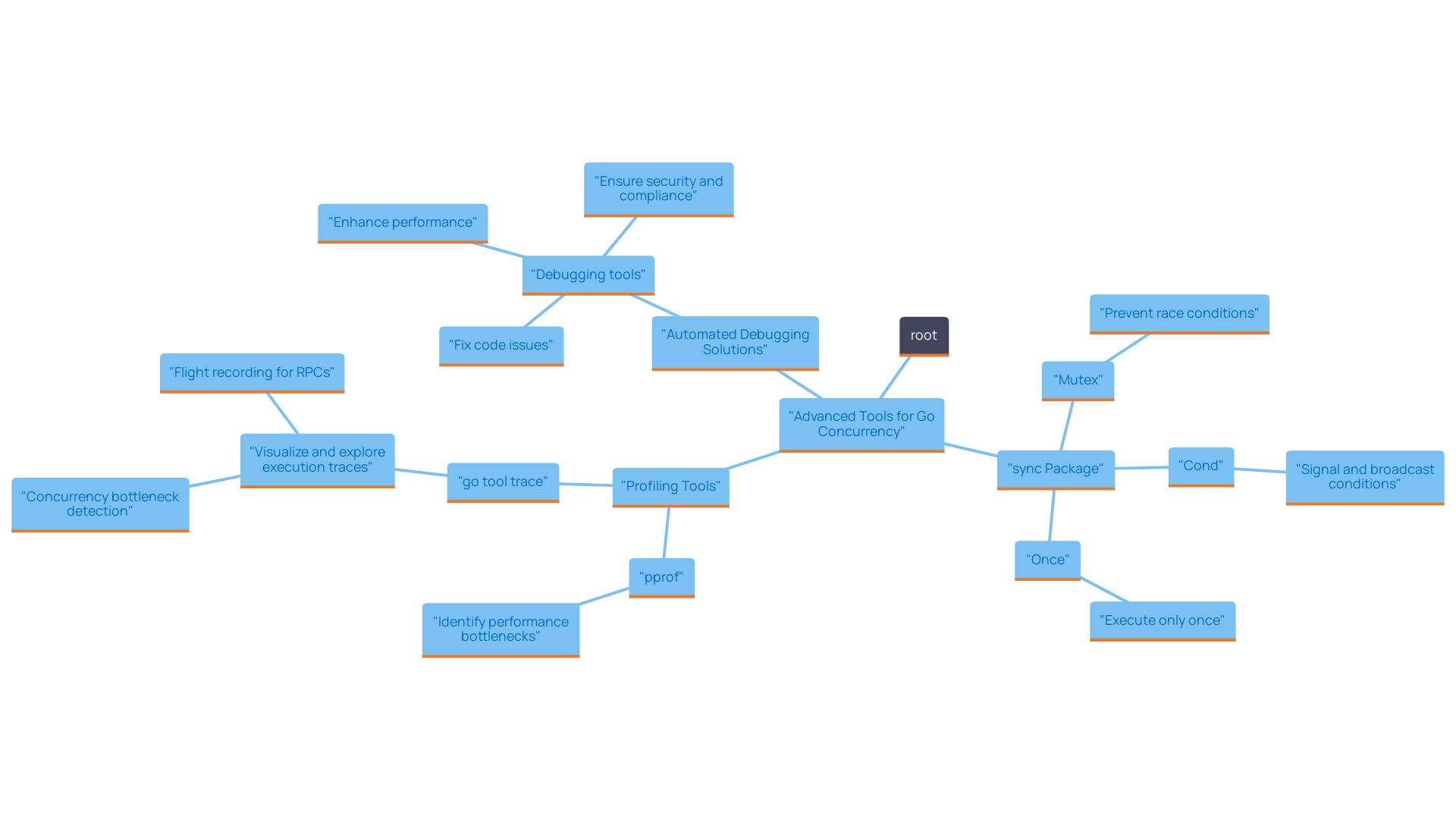
Navigating Challenges in Concurrent Go Development
Concurrent Go development presents unique challenges, particularly in error handling, debugging, and performance optimization. Developers frequently encounter issues such as race conditions, which arise when multiple goroutines access shared data simultaneously. To mitigate these risks, it is crucial to implement effective synchronization techniques, such as using mutexes or channels, and to utilize testing tools that help identify potential issues early in the development process.
Debugging concurrent applications can be particularly intricate, but tools like Kodezi can significantly streamline this process. Kodezi not only provides features for debugging, optimizing, and creating documentation and scripts but also helps programmers in ensuring their scripts compile correctly. For example, during debugging, Kodezi can assist in identifying and resolving race conditions by enabling programmers to isolate and test specific segments of programming, making it easier to pinpoint errors.
However, it's important to remember that Kodezi does not support extremely large sections of code, so selecting manageable blocks for debugging is advisable. By proactively addressing these challenges and leveraging Kodezi's capabilities, Go developers can create more resilient and efficient concurrent applications.
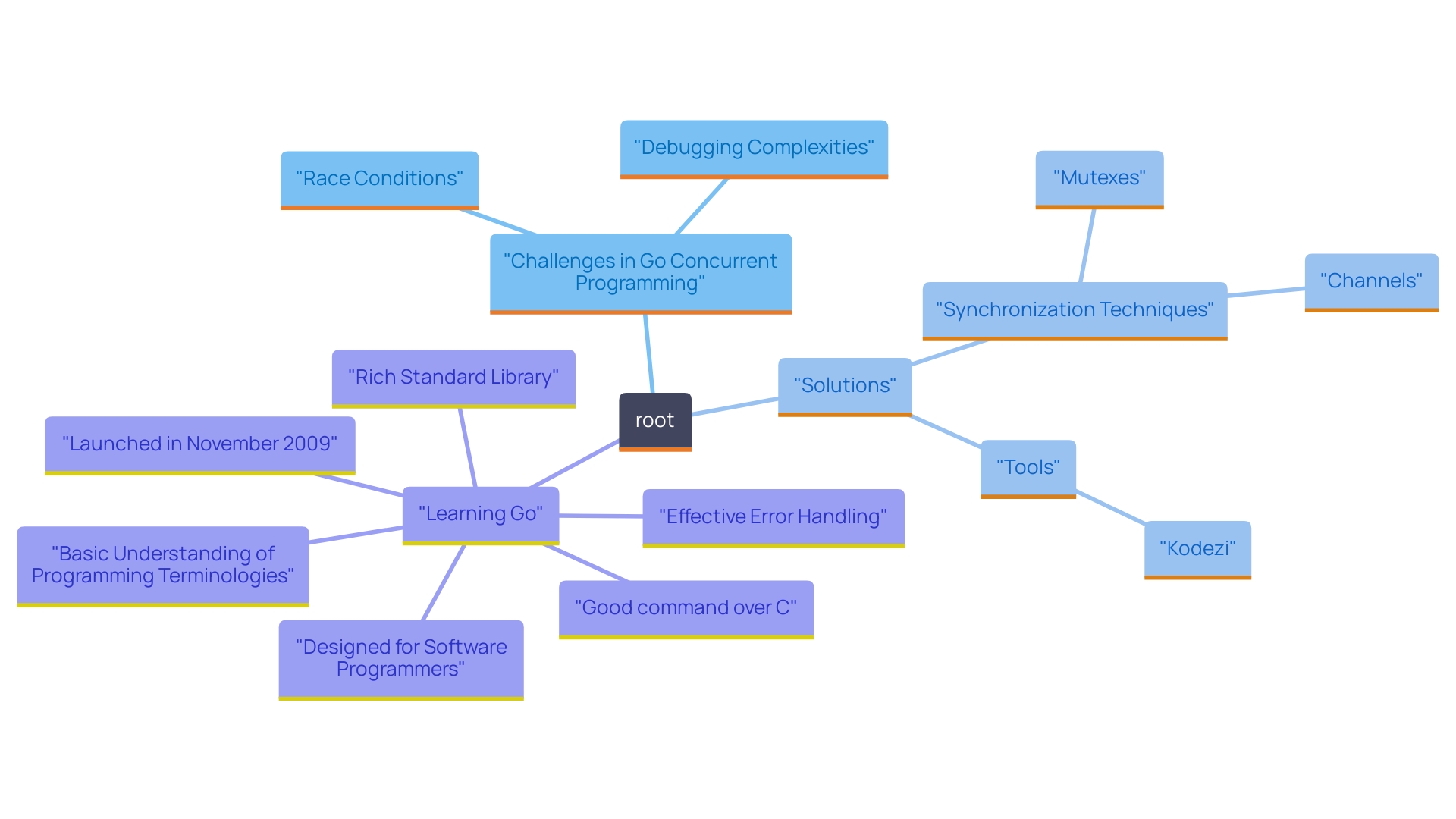
Conclusion
Understanding concurrency in Go is not just about grasping its mechanics; it is about harnessing its full potential to create efficient, responsive applications. The article highlights the foundational elements of Go’s concurrency model, including goroutines and channels, which serve as the building blocks for developing applications that can handle multiple tasks seamlessly. By implementing best practices and utilizing advanced tools, developers can optimize their code to mitigate common challenges such as race conditions and performance bottlenecks.
The insights shared emphasize the importance of structured communication through channels and the use of synchronization mechanisms to maintain the integrity of shared resources. Moreover, the advanced techniques discussed, including profiling tools and automated debugging solutions, empower developers to enhance their applications' performance and security. With these strategies, developers can navigate the complexities of concurrent programming with confidence.
Ultimately, mastering concurrency in Go is a crucial step toward building robust applications that can thrive in today's demanding software landscape. By leveraging the tools and practices outlined, developers not only improve their productivity but also lay the groundwork for innovative and efficient solutions. Embracing Go's concurrency model unlocks a world of possibilities, enabling the creation of applications that are not only high-performing but also resilient in the face of challenges.
Frequently Asked Questions
What is concurrency in Go and why is it important?
Concurrency in Go allows multiple processes to execute simultaneously using lightweight threads and efficient scheduling, which is essential for creating responsive applications that can manage multiple tasks without blocking.
How is concurrency achieved in Go?
Concurrency in Go is achieved through lightweight functions that can run independently and channels that facilitate communication between these functions.
What are goroutines in Go?
Goroutines are lightweight threads managed by the Go runtime, and developers can create them easily by prefixing a function call with the go keyword.
What role do channels play in Go's concurrency model?
Channels are used to communicate between concurrent processes, allowing them to synchronize and share data safely. They are created using the make function, enabling the transmission and reception of values.
What are some best practices for handling concurrency in Go?
Best practices include using communication pathways to prevent race conditions, implementing synchronization mechanisms like sync.Mutex or sync.WaitGroup, avoiding blocking operations in goroutines, and thoroughly testing concurrent pathways for potential deadlocks or race conditions.
What tools can developers use to optimize concurrency in Go?
Developers can use the sync package for synchronization primitives, profiling tools like pprof to identify performance bottlenecks, and automated debugging tools to ensure code quality and adherence to security best practices.
What challenges do developers face in concurrent Go development?
Developers face challenges such as race conditions, complex debugging, and performance optimization. Effective synchronization techniques and testing tools are crucial for mitigating these risks.
How can Kodezi assist in debugging concurrent applications in Go?
Kodezi helps streamline debugging by providing features for optimizing and creating documentation, as well as enabling programmers to isolate and test specific segments of code, making it easier to identify and resolve race conditions.




